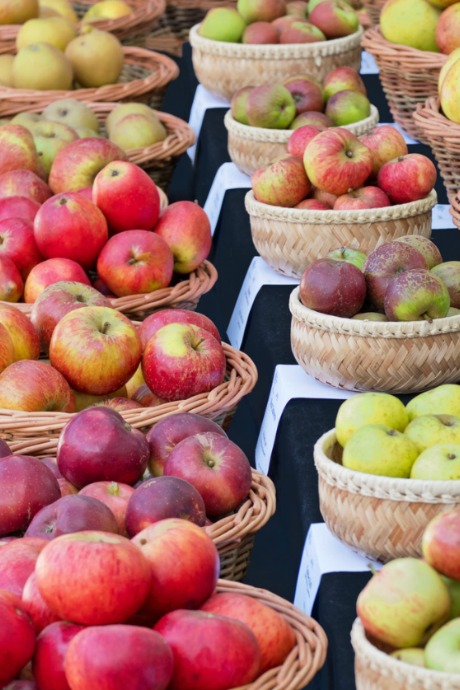Homemade Apple Cider: Scrumptious Seasonal Simmering
Posted by Julie on Oct 22nd 2018
One of our favorite festive drinks is apple cider. Delicious hot or cold, it’s a seasonal treat from the beginning of fall through the holidays. A simmering pot of apple cider smells wonderful and gives your home a warm, cozy feeling.
It’s simple enough to grab a jug of apple cider from the produce department, but we encourage you to make at least one batch from scratch. We found two recipes that will help you turn apples into cider. Worried about all the leftover pulp? We’ve got a quick bread recipe that will use it up.
What are you waiting for? Go pick some apples and meet us in the kitchen.
Homemade Apple Cider: Apple Varieties and Apple Prep
Apple cider is similar to applesauce in that you want to include a mix of sweet and tart apples. All the recipes we perused were clear on one point: use a combination of apple varieties, as opposed to a single type. Explore the varieties of apples available at your local grocery, farmers’ market, or u-pick apple orchard.

Preparing your apples is quick and painless: simple wash them and quarter them. You can leave the skin on. If you aren’t going to use the leftover pulp — though we really hope you will, or least compost it — you can even leave the seeds and stems in place.
Homemade Apple Cider: The Quick Way
This recipe from HGTV isn’t even a recipe; it includes general guidelines for prepping and processing any quantity of apples into cider. You can scale it from a pound of apples to a bushel. For quick reference, a gallon of cider requires 15 pounds of apples.
Instead of cooking the apples to soften them before mashing, you’ll toss them directly into the food processor. Puree the apples and then strain them, using cheesecloth to separate the pulp from the cider. HGTV cautions that the cider will be cloudy with solids because it hasn’t been filtered or pasteurized. That’s why it’s essential to drink it within a week or so, before it spoils. But we’re confident it will be gone much sooner than that.
Homemade Apple Cider: The Slow Way
While we’re all for saving time with the quick way, we have to admit we prefer the long way. We want the smell of simmering apples and spices to linger in our kitchen as long as possible. This recipe from Gimme Some Oven uses the slow cooker to soften the apples and let their flavors mingle with spices like cinnamon, cloves, and allspice. Definitely use whole spices, not ground ones. The whole spices will infuse flavor while your apples cook, but they’ll get strained out of the cider.

Toward the end of the cooking time, mash the apples to extract even more flavor before straining. From this point, the process is the same as the quick way: use cheesecloth to strain the mashed apples, and be sure to finish your cider soon. You can serve it immediately while it’s hot, or you can refrigerate it and reheat it on the stovetop when you’re ready to serve.
Homemade Apple Cider: Quick Bread With the Pulp
Because we hate the idea of throwing out the pulp, we wanted to find a way to use it. This quick bread recipe from Food Network is meant to use pulp from your juicer, but we think it will work fine with cider pulp too. Be sure to remove seeds and stems from your apples. If you cook your apples with whole spices, remove those from the pulp too. Finally, you may want to leave out the cinnamon and cardamom in the recipe rather than risk over-seasoning your bread.
 Free shipping over $49
Free shipping over $49










